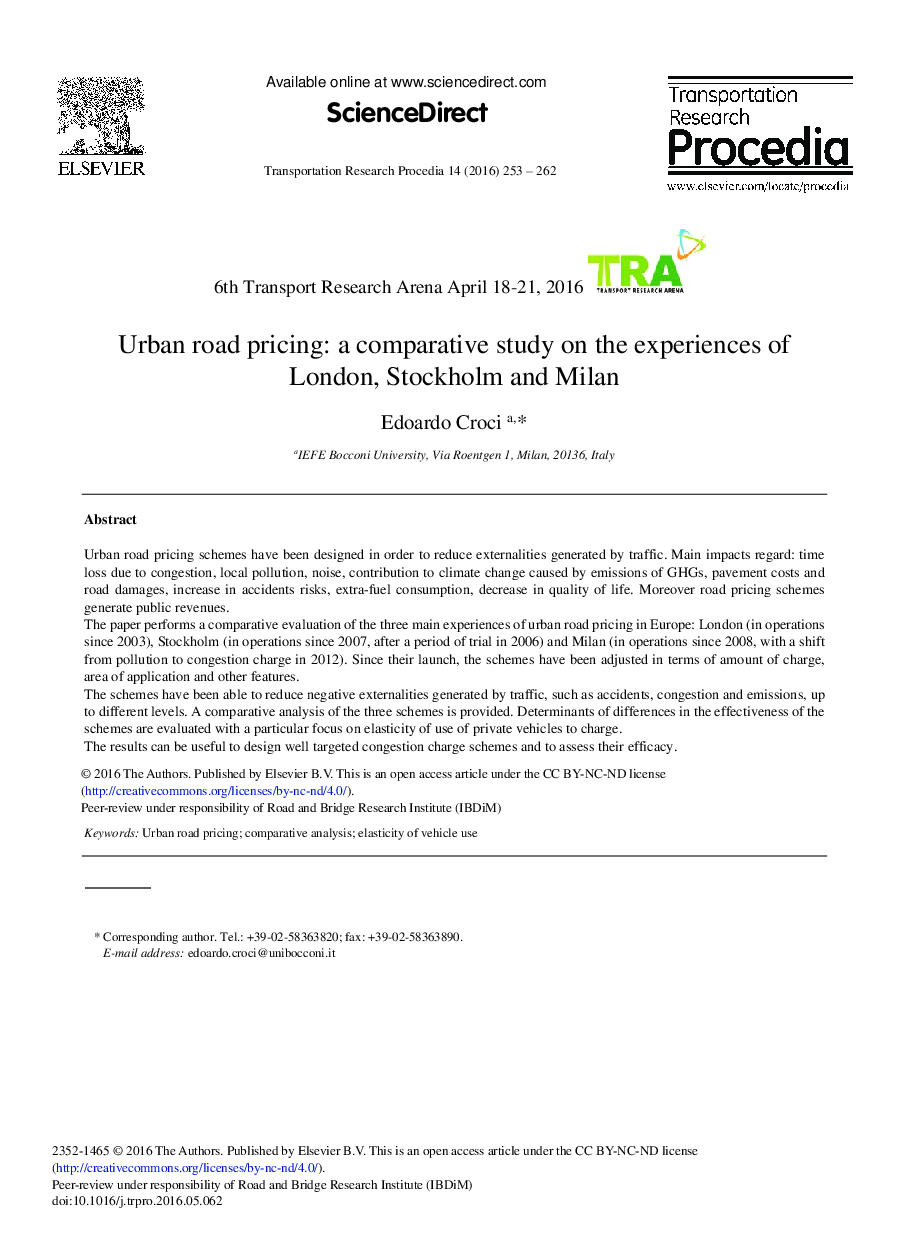| Article ID | Journal | Published Year | Pages | File Type |
|---|---|---|---|---|
| 1106210 | Transportation Research Procedia | 2016 | 10 Pages |
Urban road pricing schemes have been designed in order to reduce externalities generated by traffic. Main impacts regard: time loss due to congestion, local pollution, noise, contribution to climate change caused by emissions of GHGs, pavement costs and road damages, increase in accidents risks, extra-fuel consumption, decrease in quality of life. Moreover road pricing schemes generate public revenues.The paper performs a comparative evaluation of the three main experiences of urban road pricing in Europe: London (in operations since 2003), Stockholm (in operations since 2007, after a period of trial in 2006) and Milan (in operations since 2008, with a shift from pollution to congestion charge in 2012). Since their launch, the schemes have been adjusted in terms of amount of charge, area of application and other features.The schemes have been able to reduce negative externalities generated by traffic, such as accidents, congestion and emissions, up to different levels. A comparative analysis of the three schemes is provided. Determinants of differences in the effectiveness of the schemes are evaluated with a particular focus on elasticity of use of private vehicles to charge.The results can be useful to design well targeted congestion charge schemes and to assess their efficacy.
